The Art of Seeing Beyond the Surface
January 11, 2021 at 4:10 PM

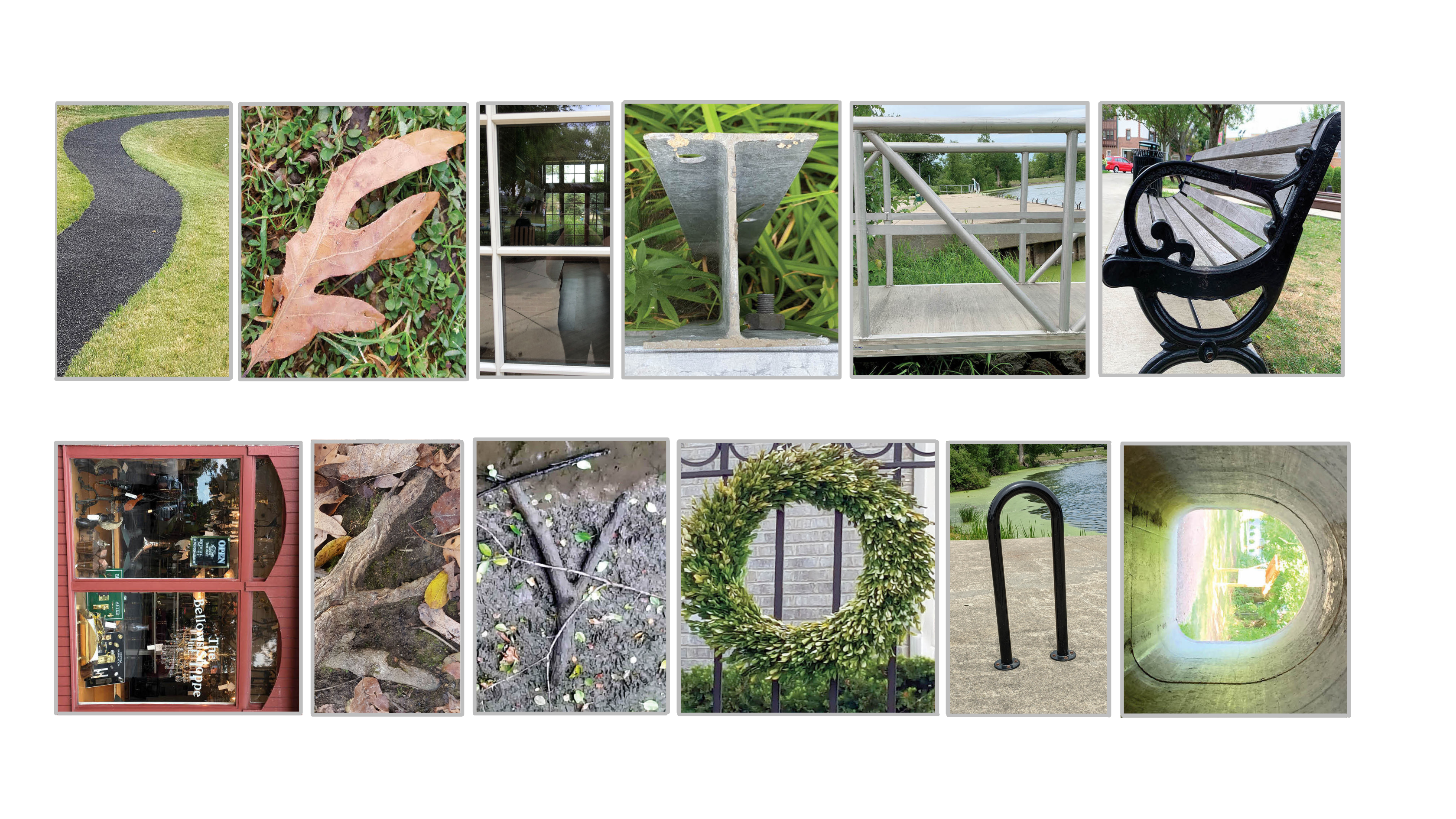
First things first. I believe in the power of design to change the world. As designers we create a bridge between information and understanding.
Industrial designers combine human usability with the design of objects. Interior designers invent surroundings that resonate with the people who live, work and shop in them. Architects design structures in harmony with their surrounding environment.
All in all, designers create so much of the world we live in. Designers have power. And we as communication designers have the capability to influence how the world works and how people engage with each other.
It is a privilege to have this kind of power. And�we must not waste it.
So how does this relate to "seeing beyond"? It's a skill that distinguishes good designers from great designers.
"Seeing beyond" is being observant and then thinking critically about what you see. Our brains aren't meant to see everything. We focus on specific things, then filter out the rest. However, with a bit of practice and effort, you can tune your brain to pay attention to new things.
NeigerDesign's "seeing beyond" philosophy
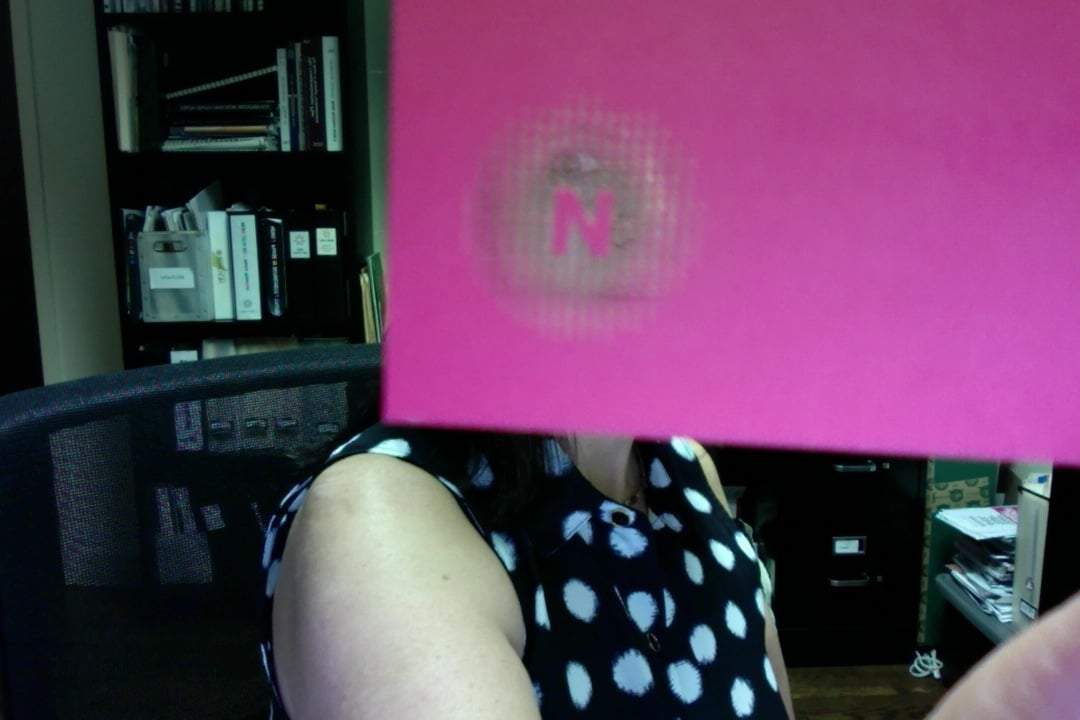
One of the first things I say when someone asks me to tell them about our design agency is "NeigerDesign sees beyond."
I hand them our business card. It has die-cut perforated holes encircling an N.
I ask them to hold it up to view it�and they see through the card immediately�as if it is a window through which to view the world a little differently.
What "seeing beyond" means is that we see beyond the surface. It is evidenced in everything we do.
We are not just dealing with the surface of a page or space�using words and pictures. We critically think about the idea behind our solutions. In order to do that we dig deep and research, taking a deep dive into client culture, challenges, and opportunities.
Our designers take that research and using mindmaps and other strategic brainstorming and ideation tools, find solutions to those challenges and help our clients get better results.
Even after analyzing what is beyond the surface of the problem, our designers use a sketchbook to develop multiple solutions. It is only through the diversity of solutions and then a process of prototyping and refinement that we arrive at the best solution for each challenge.
Early lessons in "seeing beyond"
How did I learn how to see beyond? I learned from my bow-tied, chain-smoking, glass-eyed, 62-year-old drawing teacher, when I was a freshman student of fine arts at University of Cincinnati's School of Design Art and Architecture.
Phil Foster was a wonderful artist and the best teacher I ever had. He wore a bow tie that matched the color of his socks every single day and had an off-the-wall, disarming personality to match his snappy fashion sense.
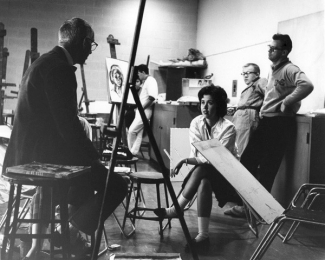
He lost an eye in an accident and had a glass eye that he would pop out during class to wipe off with his handkerchief and then plop it onto someone's sketch who did a particularly poor job drawing an eye saying, "now THIS is an eye!"
Who doesn't remember a lesson like that for life?
Born in 1915, Mr. Foster was 62 when I was his student. Funny, he was the same age I am now and I remember thinking, "he is absolutely ancient!" He was a perceptive, quirky, and amazing teacher. He pushed all of us to work hard to be better. He taught us to think and was a very tough critic. But most of all, he taught me how to see beyond: "Look for the forms behind, the defining negative space."
Mr. Foster didn't teach you to draw, he taught you to see.
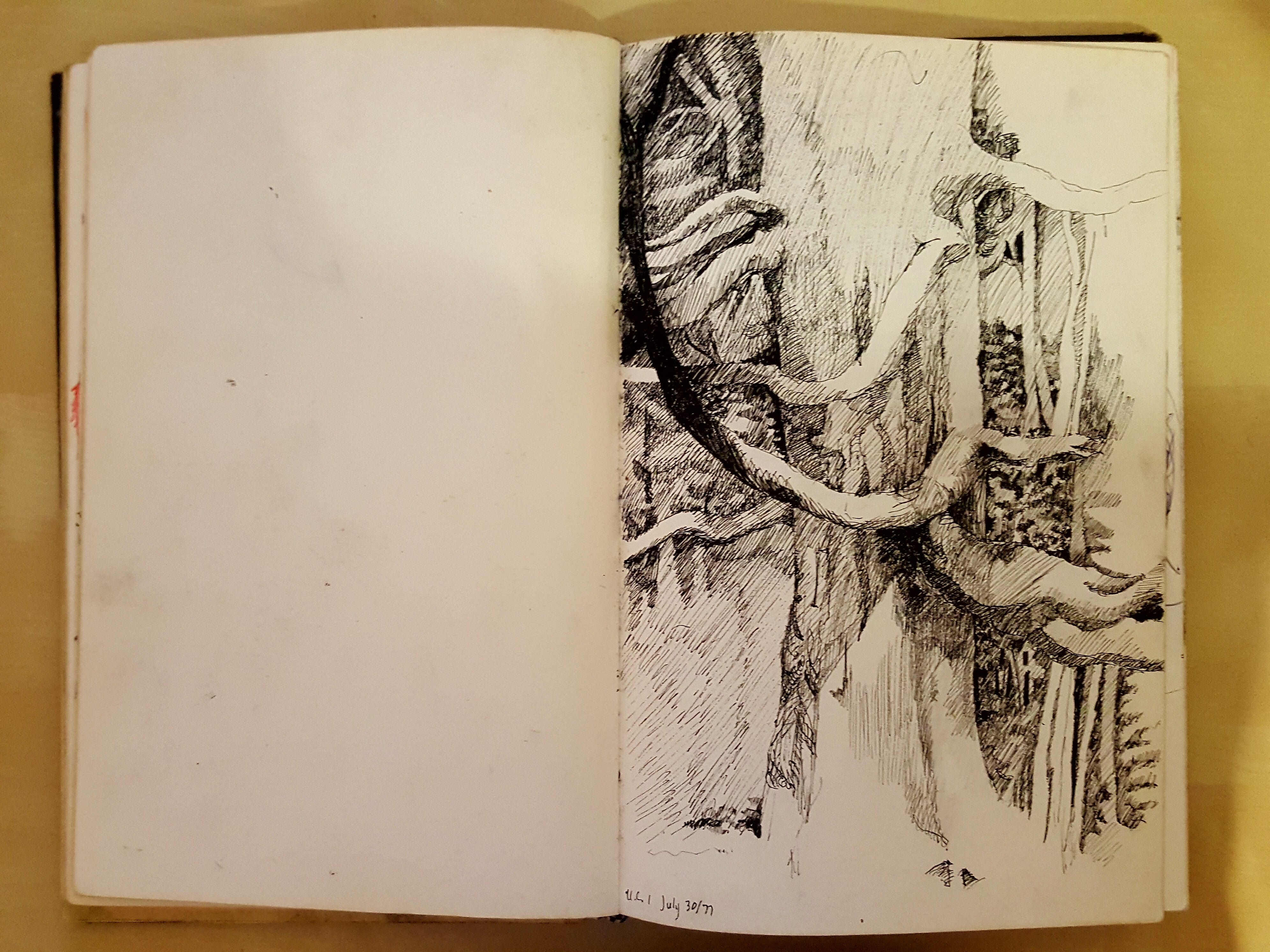
A page from my sketchbook from Mr. Foster's class at University of Cincinnati in 1977 as I looked for "the negative space" in my forest landscape.
As I progressed through design and art school at The School of the Art Institute of Chicago, I had many excellent teachers who reinforced the "how to see" lessons. These lessons of simplification and abstraction were taught by incorporating principles from the Swiss School of Design.
Even later I was introduced to the work of Edward Tufte, an expert at data visualization and making the complex simple.
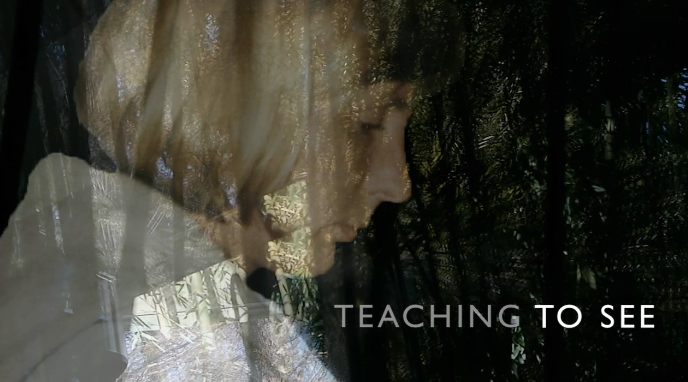
Watching the beautiful film, "Teaching to See", by Inge Druckey (spouse of Edward Tufte who taught design at Yale University, Rhode Island School of Design, University of Hartford, Philadelphia College of Art, Kunstgewerbeschule in Krefeld, The University of the Arts, and Kansas City Art Institute) is a great way to learn more about this approach. The film is about learning to look and visualize in order to design, and about the importance of drawing.
"You really learn to look, and it pays off, and suddenly you begin to see wonderful things in your daily life that you never noticed..."
-Inge Druckey
6 ways to improve your "seeing beyond" skills
So as a designer, how do you work on this practice? Here are my 6 tips that have improved my ability to see beyond and become a better designer:
1. Avoid the temptation of candy

Design is a candy store filled with millions of tasty fonts, billions of seductive colors, and infinite configurations of design elements. Candy is great, but eating too much will take you on a quick sugar high and then plunge you to a deep low before you even know what hit you. Likewise, creating beautiful objects can give you a momentary high, but it is only on the surface�a momentary buzz.
We have a much greater opportunity, privilege, and responsibility to use design to do good and create a lasting sense of fulfillment by impacting a cause, an organization, and people with designs based on goals, challenges and constraints that have been well researched and clearly stated.
It's so hard to pay attention to what's going on around you if you are running around and overstimulated. We need to go further.
Step away from the candy store and slow down.
2. Keep an eye out for new things

Challenge yourself to look at your everyday in a new way. This is easier said than done. It's helpful to give yourself a series of challenges.
- Go people watching. Put down your phone and notice how people move, talk, react to one another. Read body language and expressions. When you pay attention, you'll learn all kinds of new things.
- Go outside in nature and just listen. Think about each noise that you hear.
- Talk to an expert about their passion or hobby�they'll definitely teach you something new.
- Take notes or sketch�pick a place and write or sketch everything you see. This will train you to pay attention and observe more of the world.
- Take yourself on a "seeing beyond" photo challenge�I'll explain below…
To flex your "seeing beyond" muscles, we challenge you to an alphabet photo exercise. Your task is to find each letter of the alphabet formed in nature or architecture and take a photo of it. This is a great way to start "seeing beyond" the surface and notice things you may not have been paying attention to before. When you're finished, you can put it all together into a collage.
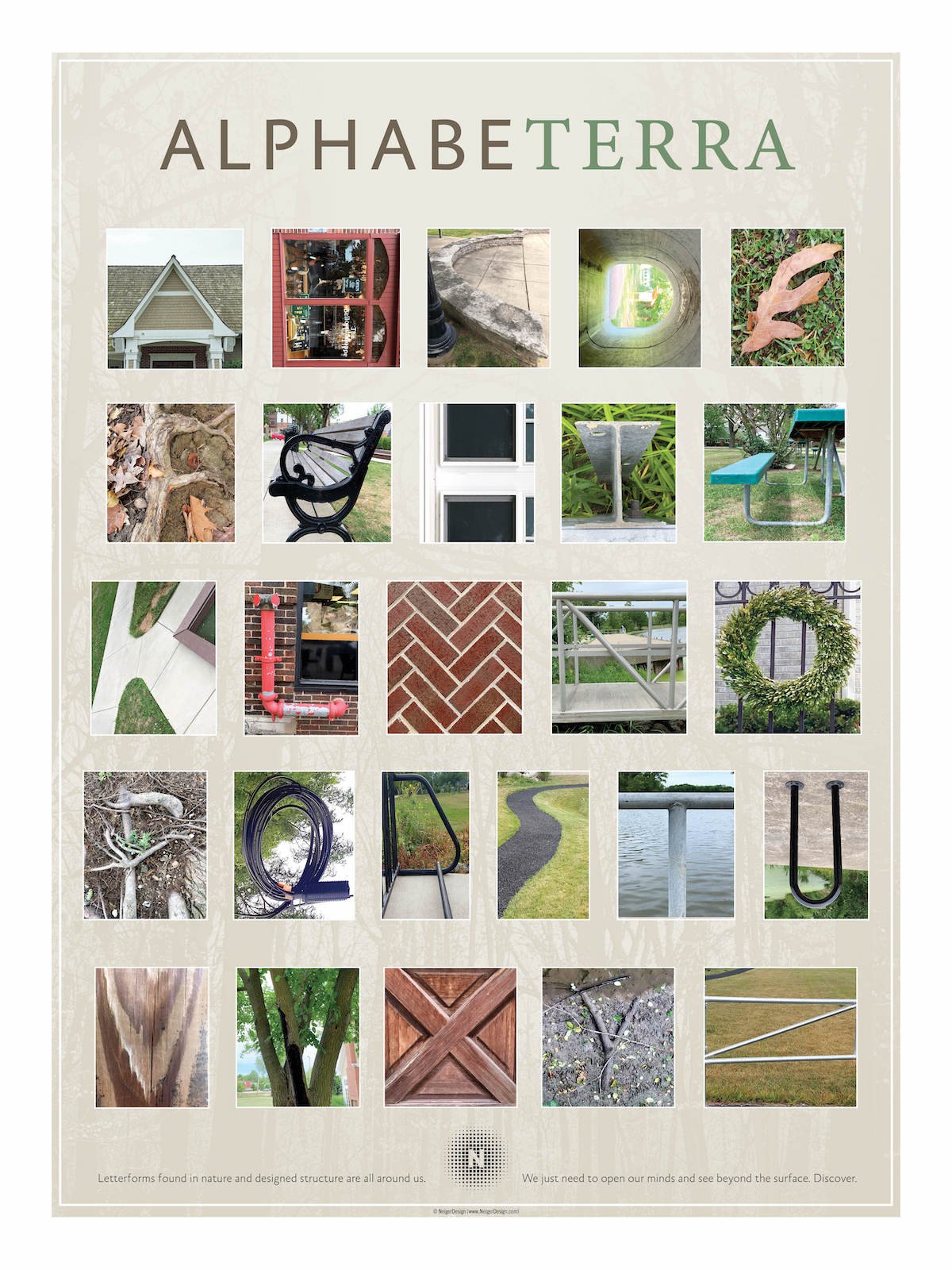
The NeigerDesign team did this challenge during a strategic planning day and this was the result! We have these posters available for sale here if you'd like to purchase your own.
"If we do not change our direction, we are likely to end up where we are headed."
-Chinese Proverb
3. Learn to ask the right questions in the right ways

Uncover as much as possible about the problem, the challenge, and the opportunity. Asking the right questions promotes innovation, drives change, and uncovers hidden problems. And that is how you get beyond the surface. This is how you take responsibility for the privilege of being a designer and tell the truth in that role.
Here are some tips on how to ask the right questions:
- Have a goal in mind: Understand why you are asking questions and what you want to know. This will help you create your questions before beginning the conversation.
- Ask open-ended questions: Open-ended questions elicit longer answers and open the door for conversation. They usually begin with what, why, how. They ask the respondent for his or her knowledge on a topic.
- Avoid influencing answers: Be careful about how you steer the conversation. Articulate your questions in a way that lets the questions flow without making someone answer in a specific way you want them to.
- Ask clarifying questions: This technique helps you understand a situation better and drill down into a specific topic. For example, "tell me more about…" , "what do you mean by…?"
- Go with the flow: Sometimes things get off-topic. Relax and don't steer the conversation too much, it could be an opportunity to learn more than you asked!
- Listen: Silence is golden. Talk as a little as you can. Don't jump to each of your planned questions so fast. Allowing questions to arise naturally from where the conversation goes will help you get better answers.
4. Don't assume anything
Not assuming anything leads to more meaningful concepts.
Many years ago, the NeigerDesign team decided to start a book club. The idea: we would all read the same books about design thinking, marketing, ideation�anything that related in any way to us as designers.
One of the books that really stuck with me was Freakonomics by Steven D. Levitt and Stephen J. Dubner. Freakonomics explores the hidden side of things. Actually Freakonomics doesn't so much explore the hidden side of everything as much as challenge the angle at which we view it all. To me, it provided the pure definition of "don't assume."
Here is one simple but powerful example from the book:
Economics is mostly about incentives, which can backfire if you don't understand how they work. One daycare learned the hard way...
Once upon a time, a daycare was plagued with late pickups. Notes were sent home, making the case for timely pickup in the name of respect for those who had to stay with the children themselves. No change.
Another note was sent home. A financial penalty for late pickups would start effective immediately.
The result? Late pickups increased exponentially. Why? The guilt had been removed and the financial penalty was so low the late pickup was now a parental perk that was accessible to most of the families.
The lesson: incentives work, just not always as intended.
The thread of the entire book is that though the world is an incredibly complex and veneered place, it is not unknowable if the right questions are asked and if you go deep enough to uncover the truth. All it takes is a new way of looking�looking beyond the surface.
Just like the lessons from Mr. Foster, Freakonomics teaches us that we must look for the hidden information behind things to truly understand them.
5. Uncover the hidden Easter eggs

Taking information and proceeding with brainstorming techniques like mindmapping, rapid ideation, team brainstorming, and starbursting (not the candy) leads you to the meaningful idea.
Developing "seeing beyond" skills are a bit like an Easter egg hunt (whoops, back to candy again). You hunt based on information you have, and you discover the hidden Easter egg. Then you take a walk in your yard later in the summer, randomly look up, and there in a branch is another Easter egg.
Yes, there are ideas everywhere, and some of the best ideas come to you after you have fully assimilated the information and had a chance to incubate them. The lesson here is if you start with an idea, the solution will truly be a designer that can fall into that world changing category.
Mr. Foster, that infamous drawing teacher, used to say, "De head goes over de fence before de tail!" He was referring to drawing, but I have learned over time, that his sage advice applies to all things created. All things designed.
6. Be Patient
To "learn to see" takes time. We tend to notice only the surface and what we have been conditioned to see in the world around us.
We see trees, tables, people, sidewalks, cars, and benches. Yet if we really look, we see patterns, textures, edges, and shapes that define the edges of objects.
And if we focus on being aware, beyond the colors, appearance of people, we can also see and sense depth, innate intelligence and energy.
"Seeing beyond," Seeing Differently
At NeigerDesign we believe so wholeheartedly in "seeing beyond" that we have a tiger on our staff. Meet our mascot, Neiger Tiger.
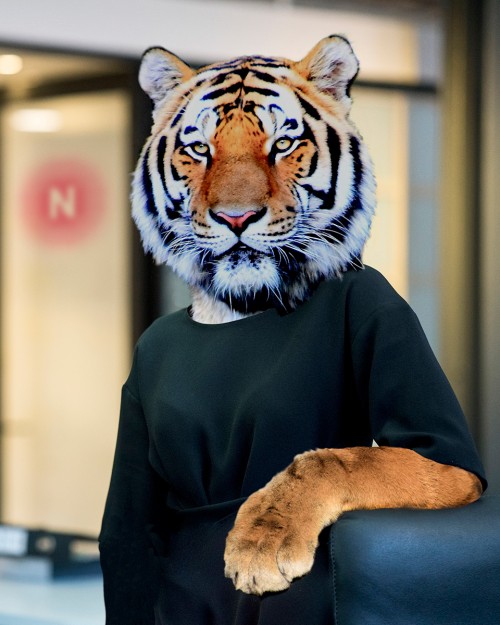
Neiger Tiger helps clients with "seeing beyond" the surface … and not just because she has excellent nocturnal vision. She's always had a knack for strategic thinking and creativity. After all, her parents were born in the heart of the jungle and had feline instincts for slowly and quietly approaching their prey.
We added Neiger Tiger to our team because we know that humans can learn from the silent and efficient movements of tigers. To be successful, sometimes you need to forego all the rushing and roaring. Sometimes you just need to slow down, listen closely, take a step back and use design thinking to arrive at the best approach and think about the big picture.
We also must learn to look beyond the surface of our fellow humans (and tigers).
One of the most important skills we can work to develop is the ability to see beneath the surface of people, circumstances or situations.
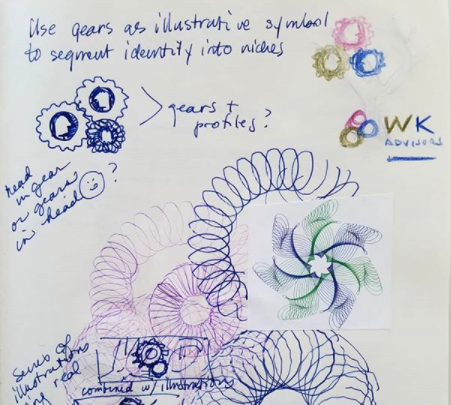
"Seeing beyond" the obvious, sensing a deeper meaning, recognizing emerging patterns, and envisioning the bigger picture are all part of a set of skills that we can and do work hard at every day.
The same is true in our life situations and circumstances. If we take time to be present with our circumstances�to "see" and feel and sense them�they, too, will reveal themselves to us. There is a lot of information and guidance hidden within the layers of our lives and experiences.
If we pay attention, everything we need to know will start to reveal itself. We will understand more fully the essence or core of what is going on. We will learn about the challenges we face and begin to define the big picture, and we will have accomplished this from "seeing beyond" the surface.
Comments
Questions or comments? Join the conversation!